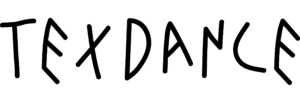
Necropolis of Tarquinia, Tomb of the Triclinium, detail right wall
The TEXDANCE project proposes an original study of Etruscan ritual and religious practices, conducted through research on the textiles in dance.
In Etruscan ritual practices, dance had a key role and constituted an important form of non-verbal religious and social communication. It is what the TEXDANCE research project will explore in depth by focusing on dance’s props and textiles.
There are no studies of the relation between dance and textiles in Etruscan ritual practices. So the scope is to examine how textiles make us understand the movements of dance, their ritual functions, their diversity, their performativity, the ritual function of costumes in dance, and the social relations which intertwine.
TEXDANCE will explore Etruscan society and its ritual dance practices between the 8th and the end of the 5th centuries BC.
The project combines three kinds of sources:
– Primarily the iconographic representations as they constitute the most important documentation for Etruria.
– Latin and Greek texts as we have no usable Etruscan texts.
– Archaeological evidence.
Among the issues the project will address, the most important are:
- What kind of textiles and dress are used in dance?
- How are they used in this context?
- How do they indicate movements, and which ones?
- Are they Etruscan productions and can this be confirmed by archaeological finds?
- If not, what does a Mediterranean origin for the textiles mean in ritual practices and beliefs?
- Which social differences do the textiles reflect among dancers? Did textiles make sounds during the dance?
These questions will be answered through the following objectives:
- Types of dress and textiles in dance: materials, colours, forms. A typological analysis of all the dancers’ clothes and textiles will be made to understand their different forms, and how the different pieces of dress – mantle, inner tunic, outer tunic, etc. – were used in dance. The study of iconographical sources will aim to understand the raw materials used for clothes in dance, such as the transparent tunics. Moreover, the colours will be taken in consideration and carefully studied. Thus, TEXDANCE will also distinguish the gendered forms of clothes in dance and the visual impact of coloured clothes. This study will be integrated to the research projects “Sensing the Ancient World: The Multiple Dimensions of Ancient Art” and “Tracking Colours” carried out by Cecilie Brøns from 2017 to 2021 at the Ny Carlsberg Glyptotek in Copenhagen.
- Motion textiles. The study of dress movement in dance. The typological analysis of body postures of dance in my PhD study on Etruscan Dance will be expanded and improved by adding a typological analysis of all the different forms of dance clothing. It will substantiate our understanding of dance movements in visual representations. Indeed, Etruscan dress gives complementary information to the visual movements, which permits us to better understand the kind of dance movement represented in pictures, and to identify moments of dance.
- Textiles Acoustics. The sounds of dancing dress. Jewellery was added to Etruscan dance dresses (bracelets, earrings, necklaces, and appliques) and supposedly made sounds when the dancers moved. What kind of sound was produced exactly? What was its aim? The aim is to understand the sounds produced and their echo in different plausible environments.
- Circulation and Fashion. The Etruscan dress identity. TEXDANCE will distinguish the different origins of Etruscan dance dresses: which clothes are Greek, and which are more widely Mediterranean? This implies thinking in terms of ethnic markers, circulation and trade. What could be the ritual power and impact of exotic and foreign textiles in Etruscan ritual practices? Which clothes appear specifically Etruscan? Was there an Etruscan dress identity?
- Textiles and aristocratic lifestyle: community organisation, ritual practices and dance. The iconographic representations depict aristocratic moments of ritual lifestyle and self-presentation. In this respect, how can we interpret the different types of clothing? What determined which dancers were naked and which were dressed? How can we interpret when specific dancers and musicians had different clothes than others? Thus, TEXDANCE will analyze how textiles played a crucial role in the aristocratic Etruscan social interactions.
- Ritual textiles making: aristocratic female education and lifestyle. How can we consider the textiles made by aristocratic women that we found in representations of dance? How did these textiles religiously impact the dance, the dancers themselves, and the ritual practices?
- Visuality of dance textiles on artefacts: a narrative system. In the iconographic representations, specific clothes, dancers and body postures are always carefully selected and adapted. TEXDANCE will study the “visuality” – as defined by Nicholas Mirzoëff – of textiles in iconographic representations of dance.
